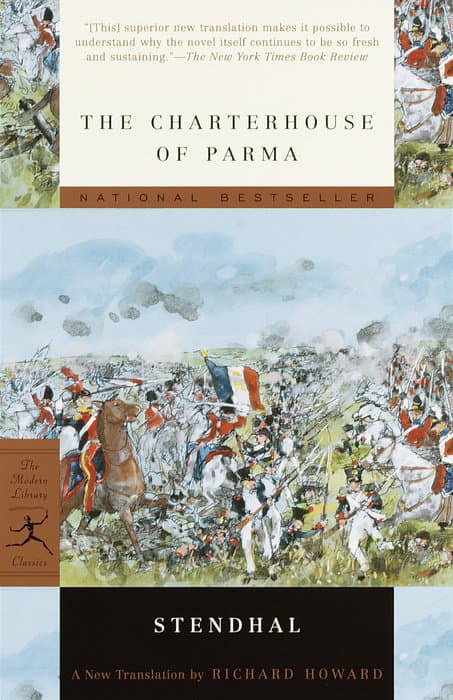
Book Review Summary: The Charterhouse of Parma
Introduction
"The Charterhouse of Parma" by Stendhal is a classic novel that has been rediscovered by modern readers due to Richard Howard's exuberant and definitive rendition. This stirring tale narrates the adventures of a young aristocrat in Napoleon's army and the court of Parma, shedding light on the entire cloth of European history. With beautiful illustrations by Robert Andrew Parker, this book offers a captivating reading experience.
About Stendhal
Henri-Marie Beyle, better known by his pen name Stendhal, was a 19th-century French writer. Known for his acute analysis of characters' psychology, Stendhal is considered one of the earliest and foremost practitioners of realism in literature. His two novels, "Le Rouge et le Noir" (The Red and the Black, 1830) and "La Chartreuse de Parme" (The Charterhouse of Parma, 1839), are considered masterpieces.
Analysis of Views
-
Realistic Depiction of Characters: Stendhal's portrayal of Italian characters, particularly their amorous passion and predilection for court intrigue, is both ironic and politically astute. He comments on romantic novels that have gone before, creating a great realistic novel that delves into the hearts of princes, ministers, courtiers, and women.
-
Romantic Elements: Despite its realism, "The Charterhouse of Parma" still contains incredibly romantic elements. The novel features a battle, a duel, a knife fight, various disguises for the hero and others, a poetry-writing revolutionary highwayman, and a passionate love affair between an unjustly imprisoned young nobleman and the beautiful daughter of the prison warden.
-
Masterful Storytelling: Readers praise Stendhal's masterful storytelling skills, describing the book as a long twisting tale of love and intrigue. The narrative is engaging and fun to read, with Stendhal's vignette-y style and witty humor adding to the enjoyment.
-
Influence on Literature: Some readers note that "The Charterhouse of Parma" lies between the styles of Tom Jones and War and Peace. It has influenced later works in its court/war split and fascination with Napoleon. However, it is also criticized for being too long and having redundant scenes of intrigue in Parma.
-
Clever Coincidences: One reader highlights their favorite coincidence in the novel, which occurs at Waterloo. This coincidence adds an element of excitement to the story and contributes to its overall appeal.
Reasons for Recommendation
-
Unconventional Narrative: Readers appreciate "The Charterhouse of Parma" for its unconventional narrative structure, which defies many conventions of the novel. It was written before these conventions were even recognized, making it a unique departure from standard 19th-century French novels.
-
Exploration of Human Nature: The novel delves deeper into human nature and psychology than traditional romantic novels. Stendhal's exploration of characters' motivations and actions adds depth to the story and makes it a compelling read.
-
Engaging Plot: The plot of "The Charterhouse of Parma" is held together by the stories of a brilliant duchess and her impetuous nephew. It includes many main characters with both good and bad actions, making it a fascinating exploration of what motivates people and how they act.
Reasons for Not Recommendation
-
Lack of Sympathy: Some readers find it challenging to sympathize with the characters in the book due to their complex motivations and actions. They feel that Stendhal does not lead them to choose one character to root for, which can make it difficult to connect with the story emotionally.
-
Dull Intrigues: A few readers find the court intrigues in Parma crushingly dull and prefer more action-packed stories. They feel that Stendahl's strength lies in showing characters who are oblivious to their own inner motives, which is less prominent in "The Charterhouse of Parma."
Conclusion
"The Charterhouse of Parma" by Stendhal is a classic novel that has been rediscovered by modern readers due to Richard Howard's exuberant rendition. Stendhal's portrayal of Italian characters and his exploration of human nature make this book a compelling read. While some readers find it challenging to connect emotionally with the characters or prefer more action-packed stories, others appreciate its unconventional narrative structure and engaging plot. Overall, "The Charterhouse of Parma" offers a unique reading experience that merits consideration for those interested in historical fiction and realistic portrayals of human relationships.